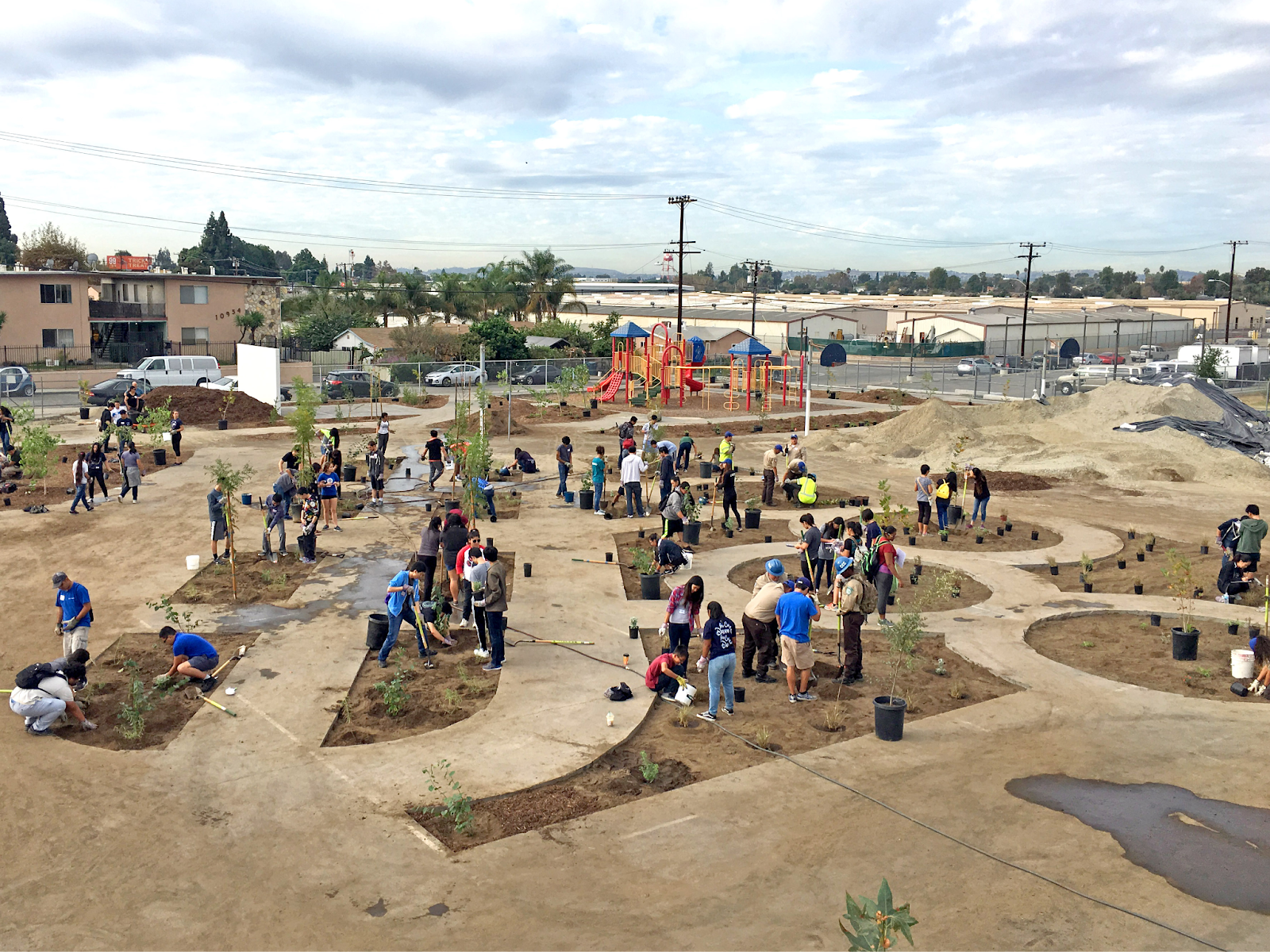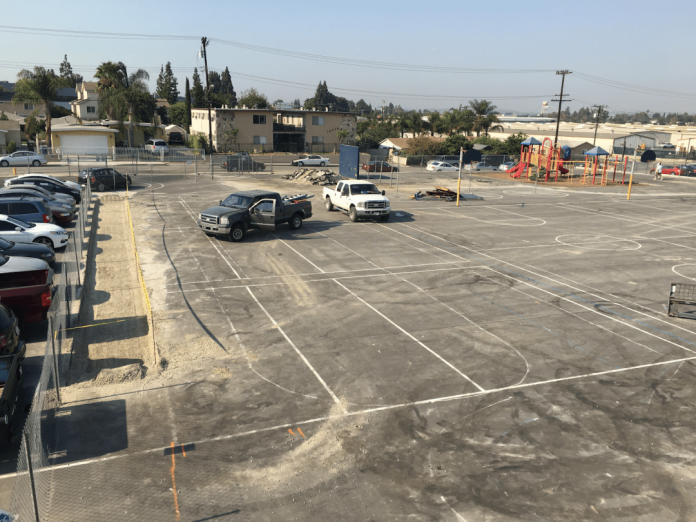WHAT YOU NEED TO KNOW: To protect kids from extreme heat, California distributed another $73 million for schoolyard greening – for a total of $120 million – to transform schoolyards.
SACRAMENTO – Governor Gavin Newsom announced another $73 million from CAL FIRE for schools to replace asphalt with green spaces, trees and vegetation to provide more protection against extreme heat for our kids. Adding to the $47 million that was announced in July, California has distributed $120 million for these projects.
Here’s a before and after example of schoolyard greening:

WHAT GOVERNOR NEWSOM SAID: “You can cook an egg on the asphalt of schools in certain parts of our state. These projects will use nature to cool our schools and make it safer for kids to be active outside.”
The Green Schoolyard Grant program helps schools convert pavement to green spaces, create drought-tolerant natural areas on school grounds, and other activities to help children connect to nature. The program is part of the Governor’s Extreme Heat Action Plan, which is backed by the $52.3 billion California Climate Commitment budget.
PROJECT EXAMPLE: The Porterville Unified School District, in partnership with the Climate Action Pathways for Schools – home to more than 14,000 students and facing notable health, environmental and economic challenges – will complete high-impact green schoolyard projects at five Central Valley elementary schools. This includes funding for creating tree-shaded pathways, drought-tolerant landscaping, nature-based exercise and play areas for children, adding filtered water hydration stations, and launching a career pathways and internship program designed to increase climate resilience while helping students learn hands-on design skills for future career tracks.
For more information on the Urban and Community Forestry Grant Program or to sign up for the email list, click here.
Here’s what else California is doing to keep people safe from extreme heat:
- Sharing tips and resources to keep Californians safer. Last month, Governor Newsom launched Heat Ready CA (HeatReadyCA.com), one of the nation’s first statewide multi-lingual awareness and education campaigns designed to keep Californians safe during extreme heat. Extreme heat is deadly – according to a report by the California Department of Public Health (CDPH), there were 5% more deaths during the record heatwave last September than would be expected in normal summer conditions.
- Opening cooling centers statewide. Local communities across the state have opened cooling centers in anticipation of extreme temperatures. The Governor and Legislature have advanced community resilience center investments, which can be used to support cooling centers and other resources to protect communities during climate and other emergencies. You can find a list of cooling centers by county here.
- Enforcing worker protections. Cal/OSHA is reminding all employers of their legal duty to protect workers from heat illness as a dangerous heat wave is forecast to impact many parts of the state for the next two weeks. State inspectors are out in full force, conducting targeted high heat inspections with a focus on construction, agriculture, landscaping, and warehouse industries to ensure employers are complying with the law. Cal/OSHA recently expanded its physical presence in Fresno, Santa Barbara and Riverside counties – allowing Cal/OSHA field inspectors to respond more efficiently in the Central Valley, Inland Empire and Central Coast areas, while providing services and resources to workers, employers and community-based organizations in these areas. In addition, the 99calor.org campaign is reaching workers and informing them about workplace protections.
- Mobilizing state government. California has activated Phase II of its Extreme Temperature Response Plan, which calls for increased coordination among state agencies and local partners.
- Building resilience against extreme heat. Last year, Governor Newsom launched California’s Extreme Heat Action Plan, backed by more than $400 million in investments as part of the $52.3 billion California Climate Commitment, to guide the state’s response to heat waves.
www.gov.ca.gov
https://www.gov.ca.gov/2023/08/16/more-trees-less-asphalt-at-school/














